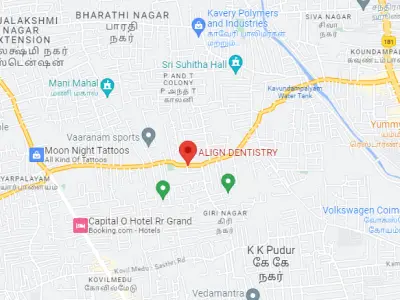
Why Are My Gums White?
Key Facts
- White gums can appear for many reasons, including irritation, anemia, oral infections, leukoplakia, or gum disease.
- Healthy gums are normally pink and firm, while unhealthy gums may look pale, swollen, or show gums turning white and receding.
- Many people notice white gums after brushing too hard or around teeth when plaque builds up, but lasting color changes need dental attention.
- Pale gums or white gums in adults can sometimes reflect deeper health problems, making early diagnosis important.
- Treatment depends on the cause—better oral hygiene, balanced nutrition, antifungal or medical care, and regular dental check-ups can all help get rid of white gums.
When you look in the mirror, you probably focus on your teeth. But your gums play a huge role in your oral health too. They hold your teeth in place, protect the roots, and act as the foundation of a healthy smile. Normally, gums should appear pink, moist, and firm. But what if one day you notice white gums?
You may start asking questions like: “Why are my gums white?” or “My gums are white around my teeth—should I worry?” Don’t panic just yet. White gums can have different meanings, from something temporary and harmless to a sign of gum disease or other medical condition.
In this blog, we’ll explore, the difference between healthy gums vs unhealthy gums, what white gums meaning really is, common causes of white gums in adults, what it means if your gums are turning white and receding and how to get rid of white gums safely and naturally
Table of Contents
Healthy Gums vs Unhealthy Gums
Your gums can say a lot about your health.
Normal Healthy Gums
If you search for normal pictures of healthy gums, you’ll see:
- Light pink color (sometimes darker depending on skin tone)
- Firm and smooth texture
- Snug fit around each tooth
- No bleeding while brushing or flossing
Unhealthy or White Gums
On the other hand, pictures of white gums usually show:
- Pale, patchy, or chalky spots
- Gum swelling or irritation
- Redness around white patches
- Gums turning white and receding, making teeth look longer
Knowing this difference helps you spot problems early. Healthy gums are the foundation of a healthy smile, while unhealthy gums can lead to discomfort, tooth loss, and even affect your overall health.
White Gums Meaning: What Does It Indicate?
So, what does it mean if you suddenly think, “My gums are white”? There are several possible reasons:
1. Oral Thrush
- A fungal infection caused by Candida yeast.
- Appears as creamy white gums around teeth or on the tongue and cheeks.
- Can cause soreness or a cottony feeling in the mouth.
- More common in people with weak immunity, those using inhalers, or after antibiotics.
2. Leukoplakia
- Creates thick white or grayish patches on gums or the inner cheeks.
- Often linked to smoking, chewing tobacco, or rough dental appliances.
- Usually painless but requires monitoring since some cases may turn precancerous.
3. Anemia
- When your body doesn’t have enough iron, gums may look pale or white instead of pink.
- You may also feel fatigue, weakness, or dizziness.
- White gums in adults caused by anemia usually improve with dietary changes or supplements.
4. Lichen Planus
- An autoimmune condition where the immune system attacks the mouth’s tissues.
- Appears as lacy, white patches across gums and cheeks.
- May cause burning, irritation, or sensitivity when eating spicy foods.
5. Gum Disease (Gingivitis & Periodontitis)
- In early stages (gingivitis), gums may bleed, swell, or look red and white.
- If untreated, it progresses to periodontitis, where you see gums turning white and receding.
- Teeth may become loose or sensitive as the gum line pulls away.
6. Canker Sores
- Small, round ulcers with a white or yellow center and red border.
- Can appear on gums and heal on their own in 1–2 weeks.
7. Injuries or Burns
- Hot foods, sharp chips, or accidentally biting your cheek can cause white patches as the tissue heals.
- Usually temporary and harmless.
White Gums in Adults
While children sometimes get gum color changes from infections or irritations, white gums in adults tend to be more serious.
- Adults are more likely to experience gums turning white and receding due to gum disease, smoking, or long-term irritation.
- If you look at pictures of white gums in adults, you’ll notice uneven coloration, patches, or thinning gum tissue.
- Adults should never ignore white patches that last more than two weeks, especially if they come with pain or gum recession.
My Gums Are White: Should I Be Worried?
It depends on the situation:
- Temporary spots: If it’s a small sore or irritation from hot food, it usually heals on its own.
- Persistent white patches: If your white gums around teeth don’t go away after two weeks, get checked by a dentist.
- Receding gums: If my gums are white and receding, this could signal gum disease or something more serious, and immediate care is needed.
In short, occasional changes aren’t alarming. But persistent white gums in adults should never be ignored.
How to Get Rid of White Gums?
If you’re wondering “How to get rid of white gums?”, here are possible solutions:
Professional Treatments
- Dental cleaning to remove plaque and tartar buildup.
- Antifungal medicines for oral thrush.
- Iron or vitamin supplements if caused by anemia.
- Biopsy or monitoring for suspicious leukoplakia patches.
At-Home Remedies
- Brush gently twice daily with a soft-bristled brush.
- Floss daily to prevent buildup around teeth.
- Rinse with salt water or an alcohol-free mouthwash.
- Stay hydrated to avoid dry mouth.
Lifestyle Changes
- Quit smoking and avoid chewing tobacco.
- Limit alcohol and sugary drinks.
- Eat a balanced diet with iron, calcium, and Vitamin C.
By combining professional care with good habits, most cases of white gums in adults can be improved or prevented.
Prevention: How to Keep Gums Healthy
- Brush and floss daily with the right technique.
- Get dental check-ups at least twice a year.
- Eat gum-friendly foods like leafy greens, nuts, and dairy.
- Avoid smoking, vaping, or chewing tobacco.
- Watch for early signs like gums turning white and receding.
Final Thoughts
Your gums are just as important as your teeth. Noticing white gums around teeth or across your mouth shouldn’t be ignored. While the causes vary—from harmless canker sores to serious gum disease—the earlier you address it, the easier it is to treat.
If you’ve been asking yourself, “Why are my gums white?”, remember: only a dentist can give you the exact answer. Until then, maintain good oral hygiene, avoid irritants, and pay attention to any changes.
A bright smile doesn’t just depend on white teeth—it also depends on pink, healthy gums.
Frequently Asked Questions
Gums may look white due to poor circulation, plaque, or oral infections. Persistent whiteness signals possible gum problems needing dental care.
Brushing too hard, harsh toothpaste, or irritation may turn gums white. If the color stays, gum disease could be the reason.
White gums around teeth can signal irritation, plaque, or early gum disease. Persistent whiteness and receding gums should be examined.
Pale gums are not always normal. They may indicate anemia, poor circulation, or early gum problems compared to normal pictures of healthy gums.
Yes, white gums in adults often need treatment. Causes range from thrush to gum disease, best identified by a dentist.
Gums turning white and receding usually point to gum disease or plaque buildup. Treatment is essential to prevent tooth loss.
Indirectly, yes. Stress weakens immunity, leading to ulcers, thrush, or infections that make my gums white around teeth.


















